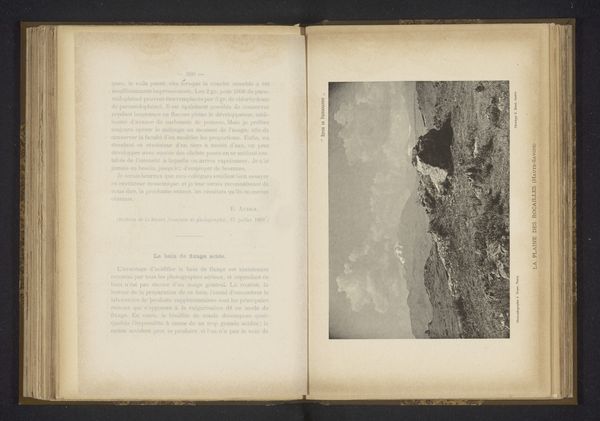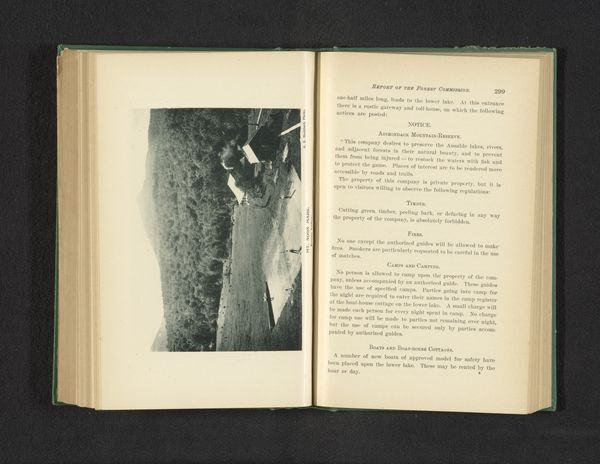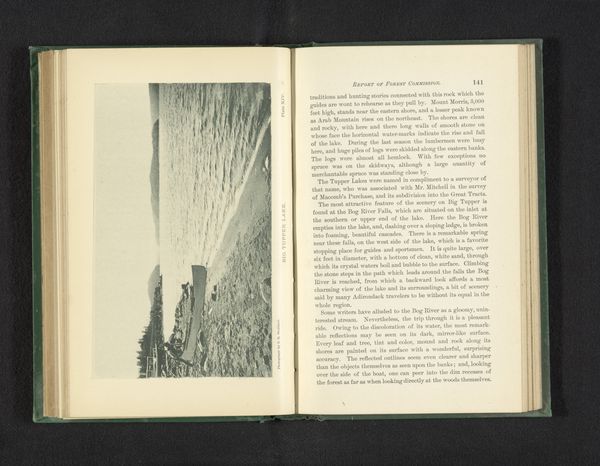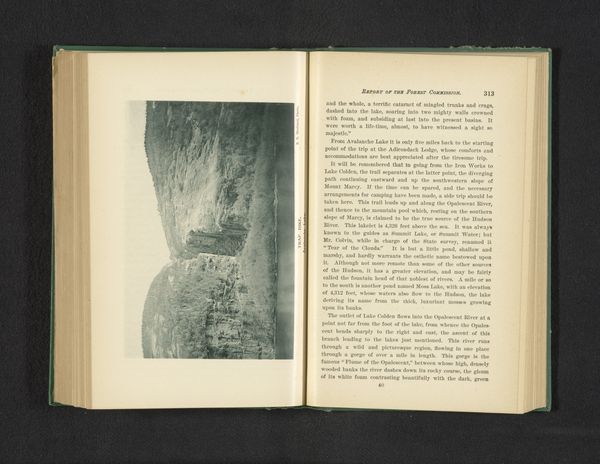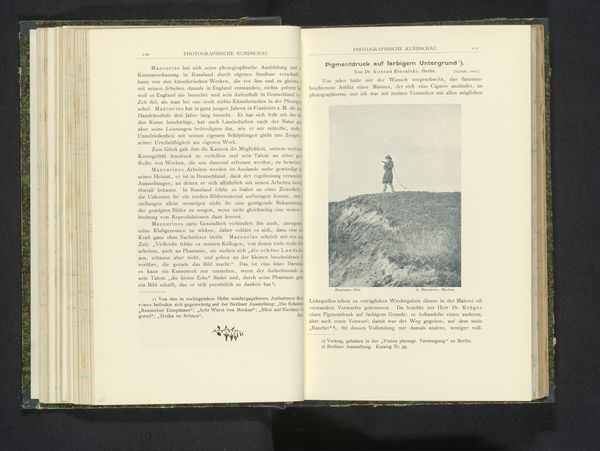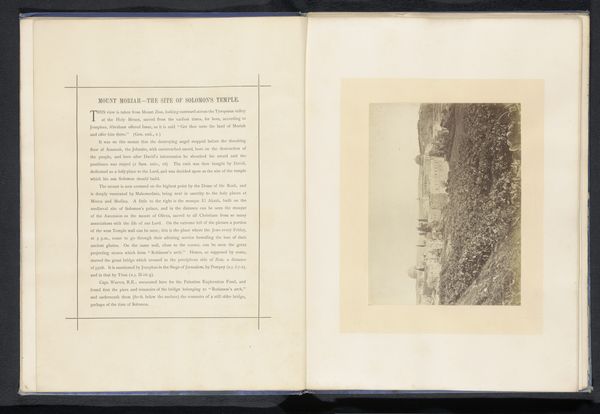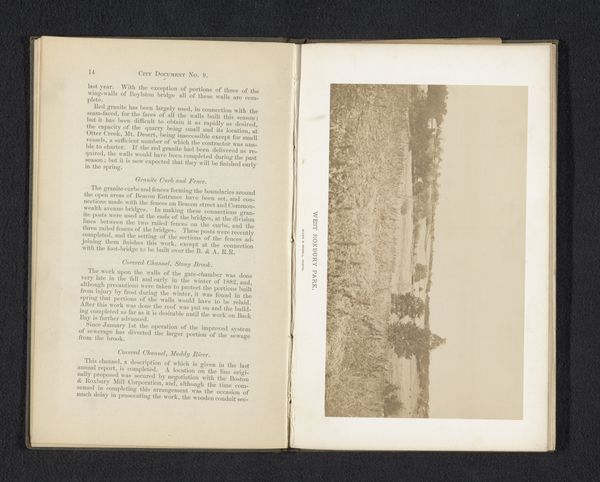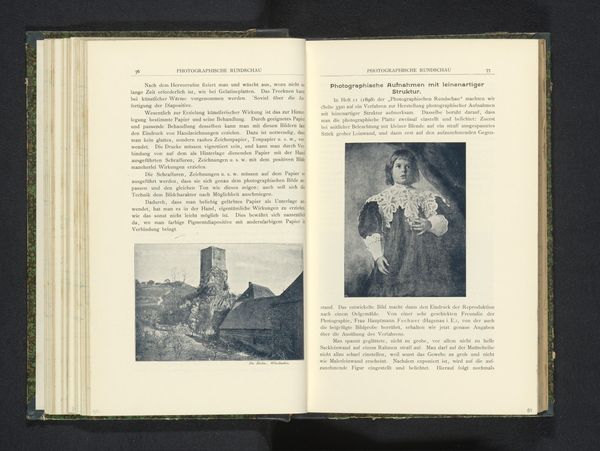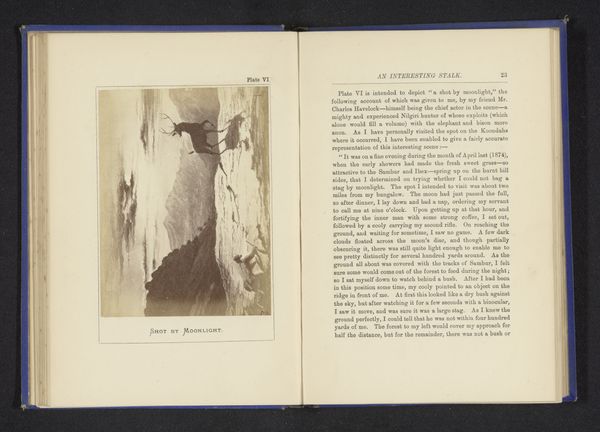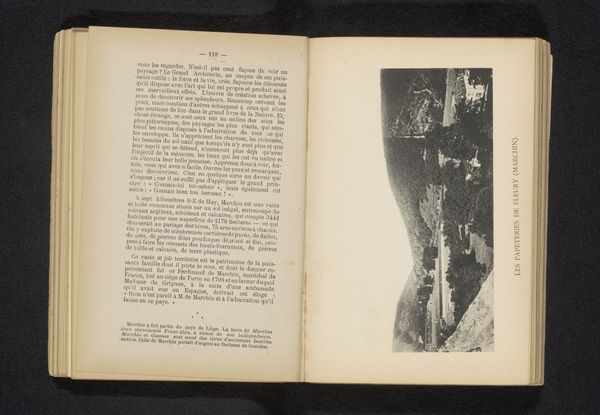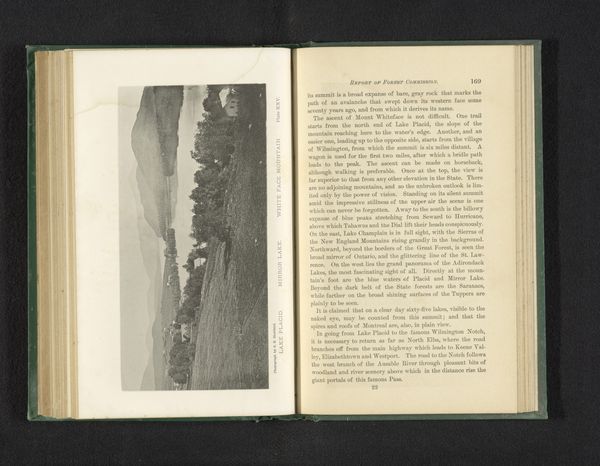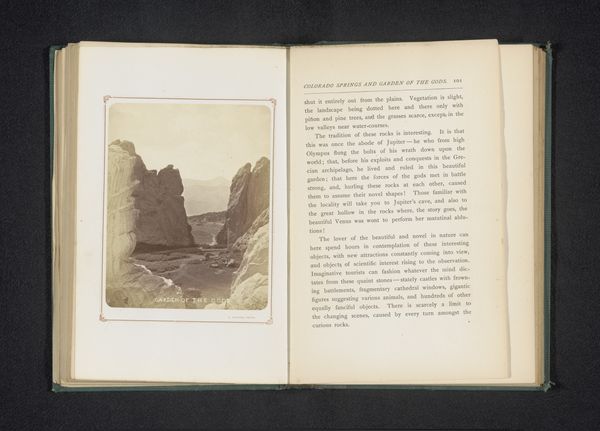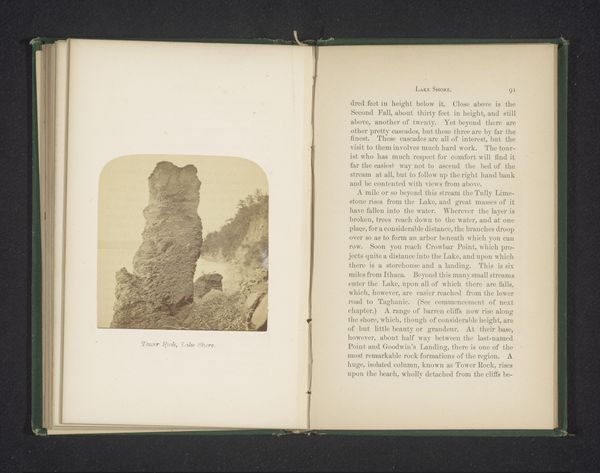
print, photography, gelatin-silver-print
#
aged paper
#
homemade paper
#
paper non-digital material
# print
#
landscape
#
personal journal design
#
photography
#
personal sketchbook
#
journal
#
gelatin-silver-print
#
thick font
#
letter paper
#
realism
#
historical font
#
columned text
Dimensions: height 110 mm, width 87 mm
Copyright: Rijks Museum: Open Domain
Editor: This image captures "Gezicht op de ingang van een koolmijn," which translates to "View of the entrance to a coal mine," taken before 1873, attributed to William H. Schurch. It is presented within a book, perhaps a personal journal, on aged paper and photographed as a gelatin-silver print. The stark contrast and depth draw me in. What stands out to you? Curator: For me, it's the tangible quality of the print itself, nestled within that book. Think about the labor involved, not just in the mining, but in the creation of this object. We see handmade paper, letter paper, thick fonts: elements deliberately brought together to make the page what it is. Who compiled that book and why? What decisions led them to bring these textual and visual records of labor together in one object? Editor: So, it's not just about the subject matter of the mine entrance, but how it was presented and circulated as a material object? Curator: Precisely. Consider the social context. This image, existing as a gelatin-silver print within the journal, makes one consider both photographic processes and how the medium influences what we know and how we experience labor practices. Are we meant to critically evaluate labor practice, or marvel at industry in that historical moment? Editor: It makes me consider the relationship between documenting something like a coal mine and the economic factors influencing what could be depicted in photography. Were there constraints or investments driving which narratives were highlighted and how the production happened? Curator: That’s a critical lens. What does it mean to circulate a landscape—both literally, through coal mining itself, and visually, through photographic prints? What stories get told, and which remain buried? Editor: I hadn't considered the implications of the materials themselves being part of the story, but it's fascinating how the book as an object informs our understanding. Thanks! Curator: Indeed. Thinking materially reveals narratives often unseen at first glance.
Comments
No comments
Be the first to comment and join the conversation on the ultimate creative platform.
